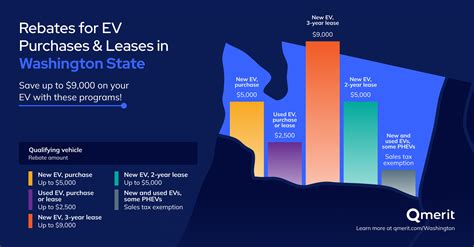The transition to electric vehicles (EVs) is at the forefront of Washington State’s climate strategy, promoting a sustainable future while addressing the rising concerns of air pollution and climate change. Central to this initiative is the Drive Green program, part of the state’s broader efforts to foster a cleaner transportation system. In tandem with federal incentives, Washington’s EV rebate program is proving to be a catalyst, accelerating the adoption of electric vehicles across the region.
The Drive Green Initiative
Launched with the objective of increasing the number of electric vehicles on the road, the Drive Green initiative aims to make EV technology accessible and financially viable for average consumers. The program offers direct rebates to individuals purchasing or leasing eligible new electric vehicles, effectively lowering the upfront cost of these environmentally friendly automobiles.
Key Features of the EV Rebate Program
The Washington EV rebate program encompasses several critical aspects designed to incentivize both consumer and dealer participation:
- Direct Rebates: Buyers can receive rebates ranging from $3,000 to $7,500 depending on the vehicle’s price and the battery capacity. These rebates reduce the overall purchase price, making EVs more attractive economically.
- Eligibility Criteria: To qualify for the rebate, vehicles must be purchased new, and they should meet specific criteria related to battery capacity and emissions standards. Popular brands like Tesla, Nissan, and Chevrolet frequently qualify, broadening consumer options.
- Partnerships with Dealers: The program encourages collaboration with local dealerships, ensuring that consumers have access to detailed information and can engage in seamless transactions.
- Focus on Equity: The Drive Green program prioritizes low and moderate-income households, offering additional rebates to help reduce the financial burden associated with transitioning to electric vehicles.
Impact on Electric Vehicle Adoption
Since the inception of the Drive Green initiative, Washington has seen a significant uptick in electric vehicle adoption. According to recent data, the state witnessed a year-over-year increase of approximately 36% in electric vehicle registrations. This surge can largely be attributed to the financial incentives provided by the EV rebate program, which has effectively bridged the gap between the higher initial cost of electric vehicles and the budget constraints of many consumers.
Environmental Benefits
The environmental impact of adopting electric vehicles extends beyond individual drivers. With a robust public transportation system and countless urban centers, Washington State stands to benefit immensely from reduced greenhouse gas emissions. Electric vehicles produce zero tailpipe emissions, contributing positively to air quality and public health.
By 2025, the state aims to have at least 50% of all new vehicle sales be electric, contributing to its ambitious goal of reducing carbon emissions to 45% below 1990 levels by 2030. The Drive Green program aligns perfectly with these objectives, making a compelling case for consumers to switch to electric vehicles.
Challenges and Considerations
While the Drive Green program has made commendable progress, it isn’t without its challenges. For instance, the availability of charging infrastructure remains a critical factor in the widespread adoption of electric vehicles. Although Washington is actively expanding its network of charging stations, barriers such as range anxiety and the inconvenience of recharging can deter potential buyers.
Moreover, continuous funding is vital to sustain the rebate program, especially as demand for electric vehicles increases. Addressing these challenges will require ongoing collaboration between state agencies, local governments, and private stakeholders.
Conclusion
Washington State’s Drive Green initiative serves as a robust model for promoting electric vehicle adoption. By providing direct financial incentives, focusing on underrepresented communities, and supporting charging infrastructure, the program is not only transforming the local automotive landscape but is also a significant step toward a sustainable future. The progress observed in increasing EV registrations and improving air quality underscores the importance of fiscal support in achieving environmental goals. As Washington moves forward, the continued success of its EV rebate program will be essential in cultivating a greener, healthier environment for all residents.
FAQs
1. Who is eligible for the Washington EV rebate?
Any individual purchasing or leasing a new electric vehicle that meets specific eligibility criteria can qualify for the rebate, including low and moderate-income households for additional benefits.
2. How much can I save with the Drive Green program?
Rebates can range from $3,000 to $7,500, depending on the vehicle’s price and battery capacity, significantly reducing the cost of purchasing an electric vehicle.
3. Is this program available for used electric vehicles?
No, the Drive Green program currently only offers rebates for new electric vehicles.
4. How can I apply for the rebate?
Consumers can apply for the rebate directly through participating dealerships or through the Washington State Department of Ecology’s website after purchasing or leasing an eligible vehicle.
5. Will the rebate program continue in the future?
While the program’s continuation depends on state funding and government support, it has been a vital tool in promoting electric vehicle adoption and achieving climate goals.
Download Washington State Ev Rebate
